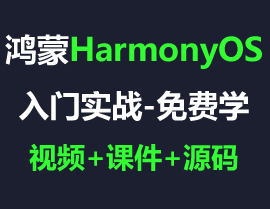Flutter注解支持插件operator_annotation的使用
Flutter注解支持插件operator_annotation的使用
在Flutter开发中,operator_annotation 是一个非常实用的插件,它允许我们通过注解的方式实现类似于 JavaScript 的对象属性访问器功能。下面我们将通过一个完整的示例来展示如何使用 operator_annotation 插件。
使用方法
首先,确保你已经在 pubspec.yaml 文件中添加了 operator_annotation 依赖:
dependencies:
operator_annotation: ^0.1.0
dev_dependencies:
build_runner: ^2.1.0
operator_builder: ^0.1.0然后运行以下命令生成必要的代码:
flutter pub get
flutter packages pub run build_runner build接下来,我们通过一个简单的例子来演示其用法。
示例代码
1. 定义类并添加注解
// 导入必要的库
import 'package:operator_annotation/operator_annotation.dart';
// 使用 @operator 注解标记类
part 'test.operator.dart'; // 自动生成的部分文件
@operator
class A {
final int a;
// 构造函数
A(this.a);
}2. 扩展类并实现属性访问逻辑
// 声明扩展以实现自定义的属性访问
part of 'test.dart'; // 主文件的引用
extension AX on A {
// 自定义属性访问逻辑
dynamic operator [](String prop) {
// 获取映射表中的函数
final func = map[prop];
if (func == null) {
// 如果属性不存在,则抛出异常
throw ArgumentError('Property `$prop` does not exist on ItemClass.');
}
// 调用对应的函数并返回结果
return func.call(this);
}
// 静态映射表,用于存储属性与方法的映射关系
static Map<String, Function(A)> map = {
'a': (A ins) => ins.a, // 对应属性 'a' 的值
};
}运行示例
我们可以创建一个实例并测试自定义的属性访问逻辑:
void main() {
// 创建类的实例
final a = A(42);
// 测试属性访问
try {
print(a['a']); // 输出 42
} catch (e) {
print(e);
}
// 尝试访问不存在的属性
try {
print(a['b']); // 抛出异常
} catch (e) {
print(e); // 输出 Property `b` does not exist on ItemClass.
}
}输出结果
运行上述代码后,控制台将输出以下内容:
42
Instance of 'ArgumentError': Property `b` does not exist on ItemClass.更多关于Flutter注解支持插件operator_annotation的使用的实战系列教程也可以访问 https://www.itying.com/category-92-b0.html
operator_annotation 是一个用于 Flutter 的注解库,它允许开发者通过注解来生成一些常见的操作符方法,如 ==、hashCode、copyWith 等。这个库可以帮助减少样板代码,提高开发效率。
安装
首先,你需要在 pubspec.yaml 文件中添加 operator_annotation 和 build_runner 依赖:
dependencies:
operator_annotation: ^1.0.0
dev_dependencies:
build_runner: ^2.1.0然后运行 flutter pub get 来安装依赖。
使用
-
导入库
在你的 Dart 文件中导入
operator_annotation:import 'package:operator_annotation/operator_annotation.dart'; -
使用注解
你可以使用
[@Operator](/user/Operator)注解来标记一个类,并指定需要生成的操作符方法。例如:[@Operator](/user/Operator)( equals: true, hashCode: true, copyWith: true, ) class Person { final String name; final int age; Person(this.name, this.age); }在这个例子中,
[@Operator](/user/Operator)注解指定了生成==、hashCode和copyWith方法。 -
生成代码
运行
build_runner来生成代码:flutter pub run build_runner build这将会生成一个
.g.dart文件,其中包含了自动生成的代码。 -
使用生成的代码
生成的代码会自动包含在项目中。你可以直接使用生成的
==、hashCode和copyWith方法。例如:void main() { final person1 = Person('Alice', 30); final person2 = Person('Alice', 30); print(person1 == person2); // true print(person1.hashCode == person2.hashCode); // true final person3 = person1.copyWith(age: 31); print(person3.age); // 31 }
注解参数
[@Operator](/user/Operator) 注解支持以下参数:
equals: 是否生成==操作符方法。hashCode: 是否生成hashCode方法。copyWith: 是否生成copyWith方法。toString: 是否生成toString方法。
你可以根据需要选择生成哪些方法。
示例
以下是一个完整的示例:
import 'package:operator_annotation/operator_annotation.dart';
part 'person.g.dart';
[@Operator](/user/Operator)(
equals: true,
hashCode: true,
copyWith: true,
toString: true,
)
class Person {
final String name;
final int age;
Person(this.name, this.age);
}
void main() {
final person1 = Person('Alice', 30);
final person2 = Person('Alice', 30);
print(person1 == person2); // true
print(person1.hashCode == person2.hashCode); // true
final person3 = person1.copyWith(age: 31);
print(person3.age); // 31
print(person3); // Person(name: Alice, age: 31)
}






